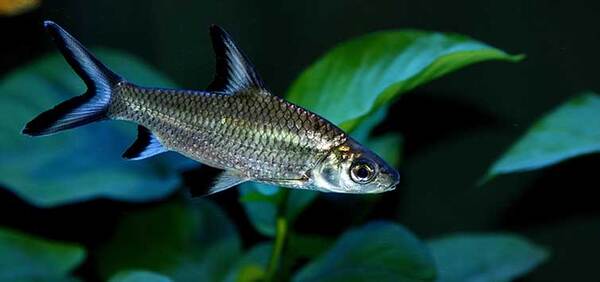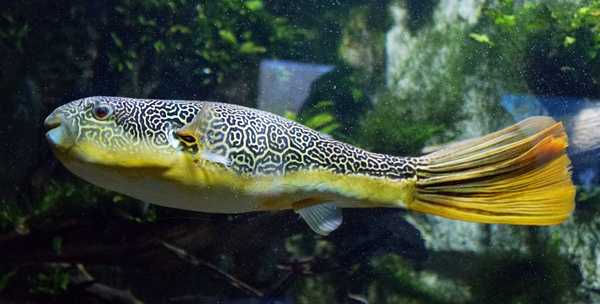If you’ve got a spacious freshwater tank and you're looking for some impressive fish to fill it, you're in the right place! Large aquariums are perfect for showcasing big, beautiful fish with unique behaviors and striking appearances. In this guide, we’ll walk you through 12 incredible fish that thrive in large freshwater aquariums. Whether you're a seasoned aquarist or a newbie, these fish are sure to add character and beauty to your underwater world.

Max Size: 3-4 feet (90-120 cm)
Tank Size: At least 300 gallons (1135 liters)
Why It's Great: The Silver Arowana is a showstopper. With its long, silver body and spectacular fin structure, it’s hard to miss! Native to South America, this fish can leap out of the water to catch prey, making it an exciting species to observe. However, due to its size and high-energy nature, it needs a large tank and plenty of space to swim around.
Care Tips: Make sure your tank has a secure lid, as this fish is known for jumping. Arowanas are carnivorous and love to eat live fish, insects, and crustaceans, but you can also feed them pellets. Keep in mind that they can be territorial, so avoid keeping them with smaller or aggressive fish.

Max Size: 12 inches (30 cm)
Tank Size: At least 75 gallons (285 liters)
Why It's Great: Known for their striking black and yellow striped patterns, Leporinus fish are active and social. They’re typically peaceful but can be a bit nippy at times, especially if they’re kept with slower, smaller fish.
Care Tips: Leporinus thrives in groups, so it’s best to keep them with other similar-sized, non-aggressive fish. They can be picky eaters, so offering a variety of foods like live or frozen foods and vegetables is key. Be sure to avoid keeping them with delicate plants as they might nibble on them!

Max Size: 16 inches (40 cm)
Tank Size: 50-100 gallons (190-380 liters)
Why It's Great: Goldfish are some of the most popular aquarium fish around. While many people mistakenly think they can thrive in small tanks, goldfish actually need plenty of space to grow and stay healthy. These social and long-lived fish can live for decades with the right care.
Care Tips: Goldfish are incredibly messy eaters, so it’s important to have a good filtration system to keep the water clean. They’re not picky eaters but avoid keeping them with very small fish as they might try to eat them. Goldfish enjoy a varied diet, including high-quality pellets, frozen food, and vegetables.

Max Size: 24 inches (60 cm)
Tank Size: At least 75 gallons (285 liters)
Why It's Great: The Pleco is famous for its algae-eating habits, making it an excellent choice for anyone who needs help with tank maintenance. These fish have a robust, armored body and are bottom dwellers, meaning they’re always working to keep your tank clean.
Care Tips: Plecos are easy to care for as long as you provide them with enough space. They’re peaceful but might nibble on plants. You’ll also need to supplement their diet with algae wafers, vegetables, and occasional protein-rich foods like shrimp.

Max Size: 18 inches (45 cm)
Tank Size: At least 150 gallons (570 liters)
Why It's Great: With its long, elegant body and unique “knife-like” swimming style, the Black Ghost Knife Fish is a fascinating species. It uses weak electrical signals to navigate and locate food, adding a mysterious, almost magical feel to your tank.
Care Tips: These fish are nocturnal, so you'll see most of their activity at night. They're best kept with other peaceful, medium to large fish. They can be a bit shy and prefer hiding spots, so make sure to provide plenty of caves or plants. Avoid keeping them with aggressive species.

Max Size: 24 inches (60 cm)
Tank Size: At least 75 gallons (285 liters)
Why It's Great: The Jaguar Cichlid is an aggressive species with an eye-catching appearance, featuring dark, jaguar-like spots. Known for its territorial behavior, this fish makes for a powerful presence in any aquarium.
Care Tips: If you’re looking for a fish with personality, the Jaguar Cichlid is perfect! However, it’s important to keep it with other large, aggressive fish. They can be territorial, so it’s best to avoid mixing them with smaller or more peaceful species. Feed them high-protein foods like shrimp, fish, and worms.

Max Size: 3 feet (90 cm)
Tank Size: At least 200 gallons (760 liters)
Why It's Great: With its striking tiger-like markings and massive size, the Tiger Shovelnose Catfish is a showstopper. It’s an active swimmer and loves open spaces, making it perfect for large aquariums.
Care Tips: These catfish are predators, so it's important to keep them with large, non-aggressive fish. They do best in a tank with plenty of hiding spots and a strong filtration system, as they are messy eaters. They’re carnivorous and prefer live or frozen foods like fish, shrimp, and worms.

Max Size: 30 inches (76 cm)
Tank Size: At least 125 gallons (475 liters)
Why It's Great: The Tire Track Eel is an incredibly unique fish, with a long, eel-like body that is marked with dark, tire-track-like stripes. It’s a bottom dweller, spending most of its time hiding and searching for food.
Care Tips: These eels are best kept in soft, sandy-bottom tanks where they can burrow. They do well with other peaceful bottom dwellers but avoid smaller fish, as the eel might view them as food. Their diet consists of live foods and occasional pellets.

Max Size: 24 inches (60 cm)
Tank Size: At least 100 gallons (380 liters)
Why It's Great: The Polypterus is an ancient fish species with a unique, prehistoric look. Known for its bony fins and eel-like body, it’s often called the “bichir” and is one of the hardiest fish for large aquariums.
Care Tips: These fish are relatively easy to care for and will thrive in tanks with soft substrate and plants. They’re peaceful, but be cautious when pairing them with smaller fish, as they might view them as food. Feed them a varied diet of live food, pellets, and frozen options.

Max Size: 14 inches (35 cm)
Tank Size: At least 125 gallons (475 liters)
Why It's Great: The Bala Shark is a fast-swimming, schooling fish that brings excitement to any tank. Despite its name, it’s not actually a shark, but its sleek, silver body and graceful swimming make it look like one.
Care Tips: It’s best to keep Bala Sharks in schools, so add at least three to four of them to your tank. They’re peaceful and get along well with most other fish. They enjoy a varied diet of flakes, pellets, and occasional live food.

Max Size: 15 inches (38 cm)
Tank Size: At least 125 gallons (475 liters)
Why It's Great: The Fahaka Pufferfish is a tough, yet fascinating fish. It has a large, bulbous body and is capable of inflating when threatened. It’s a carnivorous species that can thrive in large, well-maintained tanks.
Care Tips: This pufferfish is known for its aggressive behavior, so it’s best to keep it with other large, non-aggressive fish. Avoid keeping it with small or delicate species. Provide a protein-rich diet, including shrimp, snails, and frozen fish.

Max Size: 12 inches (30 cm)
Tank Size: At least 75 gallons (285 liters)
Why It's Great: The Needlefish is a unique, slender species with a long, needle-like mouth that it uses to catch small fish and insects. It’s fast and agile, making it a fascinating fish to observe in a large tank.
Care Tips: Needlefish do well with other medium-sized, non-aggressive fish. Avoid pairing them with very small or slow-moving fish, as they might become prey. These fish are carnivorous, so feed them live food, such as insects or small fish.
When choosing fish for your large freshwater aquarium, it’s essential to consider their space needs, temperament, and dietary requirements. The fish listed here are all unique and can add a lot of personality and beauty to your tank, but make sure you're prepared to meet their care needs. Whether you want sleek swimmers like the Silver Arowana or a hardy species like the Polypterus, these fish will create a stunning underwater environment!
animal tags: large-freshwater-aquarium Needlefish
We created this article in conjunction with AI technology, then made sure it was fact-checked and edited by a Animals Top editor.